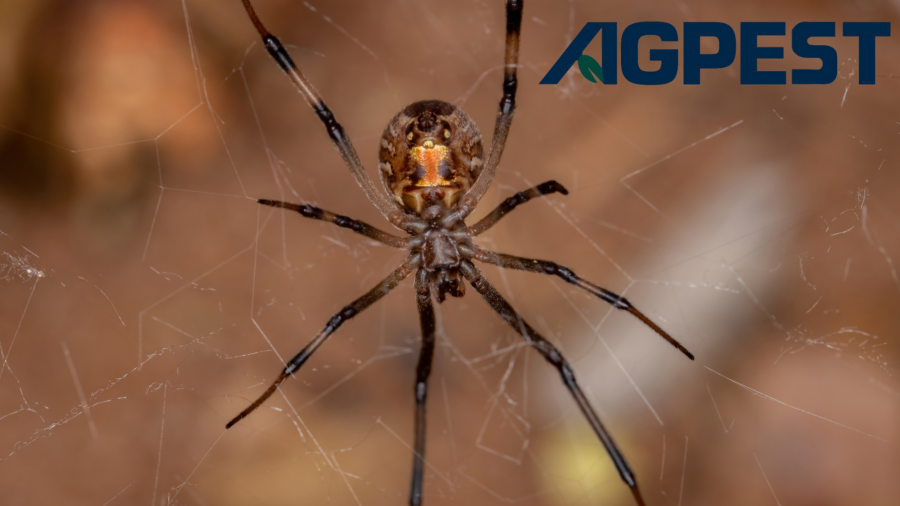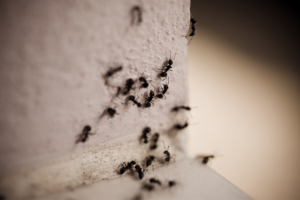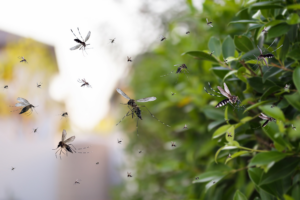San Diego is home to a variety of spiders, some of which pose significant health risks due to their venom. Knowing how to identify these spiders and understanding where they are commonly found can help you protect yourself, your family, and your pets from dangerous spider bites. In this guide, we will explore the most common venomous spiders in the area, including the brown widow spider, black widow spider, and false widow spider, along with ways to manage and prevent their presence in your home or yard.
Identifying Common Venomous Spiders in San Diego
Black Widow Spider
The black widow spider (Latrodectus hesperus) is perhaps the most well-known venomous spider in Southern California. These spiders are notorious for their shiny black bodies and the distinctive red hourglass marking on the underside of the abdomen.
Identification:
- Size: Female black widows are about 1.5 inches long, including the legs, while males are much smaller and less venomous.
- Color: Glossy black body with a bright red hourglass on the abdomen.
- Behavior: Black widow spiders prefer dark, undisturbed areas. They often spin irregular, sticky webs in places like garages, basements, woodpiles, and outdoor furniture.
Common Places Found:
Black widows tend to hide in dark, secluded areas such as sheds, crawl spaces, and underneath decks or furniture. In homes, they are often found in basements or closets that aren’t frequently disturbed.
Risks:
Black widow bites can be dangerous, especially to children, the elderly, and those with weakened immune systems. Symptoms include severe pain at the bite site, muscle cramps, nausea, and sometimes difficulty breathing. While rare, bites can lead to serious health complications if not treated promptly.
Brown Widow Spider
The brown widow spider (Latrodectus geometricus), a close relative of the black widow, has been spreading throughout Southern California in recent years. Though its bite is considered less venomous than that of the black widow, it still poses a risk, especially for those who are allergic to spider venom.
Identification:
- Size: Similar to the black widow, brown widows are slightly smaller, with females being around 1 to 1.5 inches long.
- Color: Light brown or tan body with dark brown or black markings and an orange or yellowish hourglass marking on the underside of the abdomen.
- Behavior: Like black widows, brown widows spin tangled webs and prefer dark, hidden areas. They can often be found in outdoor areas like fences, garden pots, and playground equipment.
Common Places Found:
Brown widows are more likely to be found outdoors, particularly in cluttered areas like garages, under eaves, and in empty containers. However, they may also invade indoor spaces such as attics or crawl spaces.
Risks:
A brown widow spider bite is less venomous than a black widow’s, but it can still cause pain, swelling, and redness at the bite site. In some cases, victims may experience muscle cramps and fever, but severe reactions are uncommon.
False Widow Spider
The false widow spider (Steatoda grossa) is often mistaken for the black widow due to its similar appearance, though it is less dangerous. While their bites are typically mild compared to widow spiders, false widows can still cause discomfort and, in rare cases, an allergic reaction.
Identification:
- Size: False widow spiders are slightly smaller than black widows, with bodies up to 0.6 inches long.
- Color: Dark brown or purplish-black, with a bulbous abdomen. They lack the red hourglass marking that distinguishes true widow spiders.
- Behavior: False widows create messy, cobweb-like structures and are most active at night. They hide in cracks, crevices, and other sheltered areas.
Common Places Found:
False widows are commonly found indoors, particularly in basements, attics, and cupboards. Outdoors, they may inhabit sheds, garages, and sheltered garden areas.
Risks:
Bites from false widow spiders are typically not dangerous but may cause localized pain, redness, and swelling. In rare instances, more severe symptoms like fever or nausea may occur.
How to Get Rid of Venomous Spiders
Dealing with venomous spiders like black widows, brown widows, and false widows requires a proactive approach. Here are some methods to help eliminate these spiders from your home and yard:
Remove Webs and Egg Sacs
Regularly inspecting and removing webs from outdoor areas like door frames, fences, and under eaves can help reduce the spider population. Be cautious when removing egg sacs, as they can contain multiple spiderlings that may spread quickly.
Declutter Your Property
Spiders are drawn to cluttered areas that provide ample hiding spots. Keep your home and yard tidy by removing piles of wood, leaves, or debris. Indoors, organize closets, basements, and garages to reduce hiding places.
Seal Cracks and Openings
Prevent spiders from entering your home by sealing cracks around windows, doors, and foundation walls. Repair torn screens, and install weather stripping around doors to limit their access.
Use Spider Repellents
Insecticidal sprays labeled for spiders can be applied to areas where spiders are frequently found. For a natural option, consider using essential oils such as peppermint, eucalyptus, or lavender, which are known to repel spiders.
Pest Control Services
For severe infestations or if you’re uncomfortable dealing with venomous spiders, it’s best to contact a professional pest control company. Trained technicians can assess the infestation and use specialized treatments to eliminate spiders from your property.
Prevention Tips for Venomous Spiders
Taking steps to prevent spiders from invading your space is essential for maintaining a safe environment. Here are some effective prevention tips:
- Maintain Cleanliness: Regular cleaning and decluttering help reduce spider habitats both indoors and outdoors.
- Reduce Outdoor Lighting: Spiders are attracted to areas where they can catch insects. Turning off outdoor lights or using yellow, bug-repellent bulbs can help minimize the number of insects (and spiders) around your home.
- Keep Landscaping Trimmed: Overgrown bushes, trees, and shrubs provide excellent hiding spots for spiders. Keep vegetation trimmed and away from your house.
- Use Spider Traps: Sticky traps can be placed in dark, hidden areas where spiders are often found. These traps can help reduce the spider population in your home.
- Schedule Regular Pest Control: Professional pest control services can monitor your property for signs of venomous spiders and apply treatments as needed to prevent infestations.
San Diego’s is home to several venomous spiders, including the black widow, brown widow, and false widow spiders. By learning how to identify these spiders and taking preventive measures, you can reduce the risk of bites and ensure a spider-free home. For professional help in managing spider infestations, reach out to a trusted pest control company in Southern California to keep your home safe and pest-free year-round.



